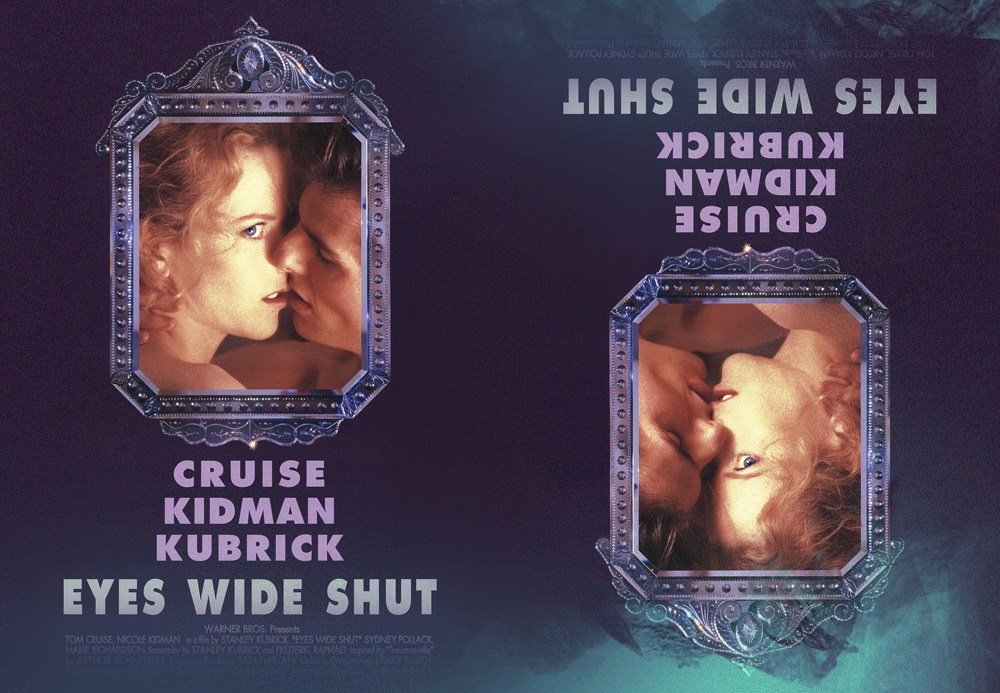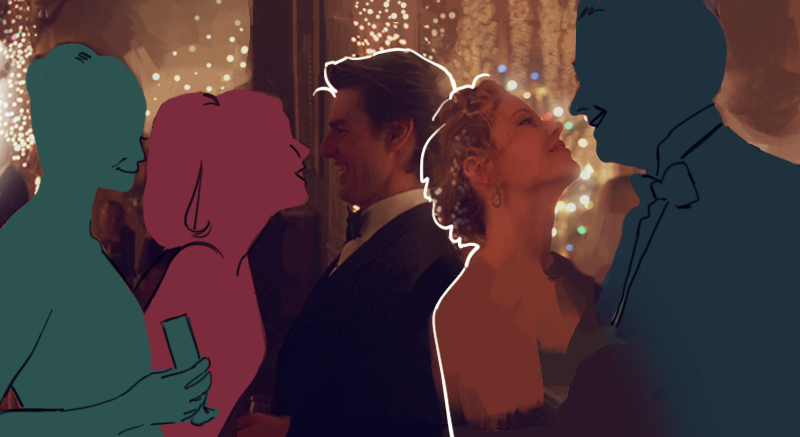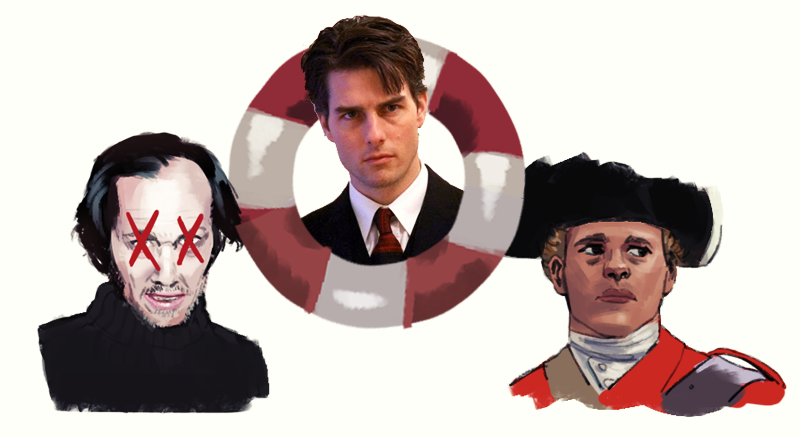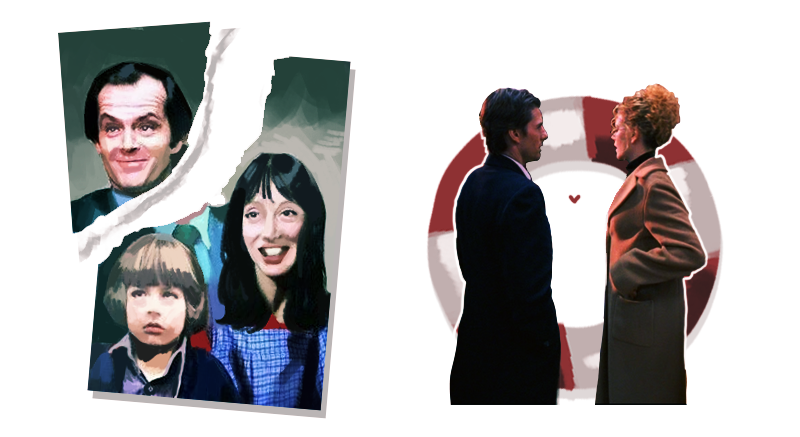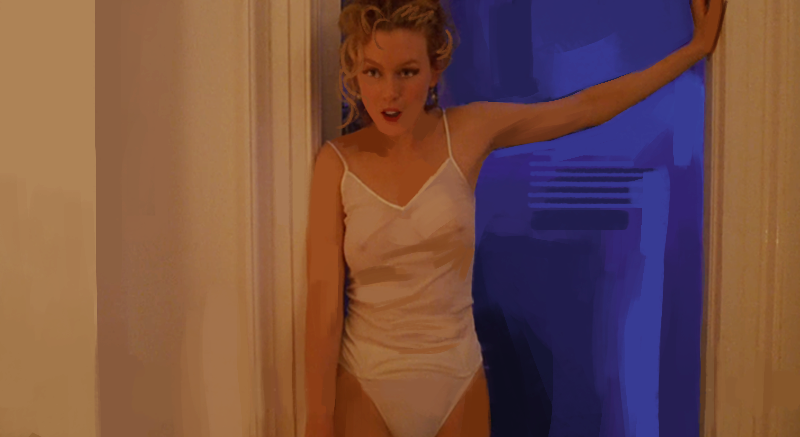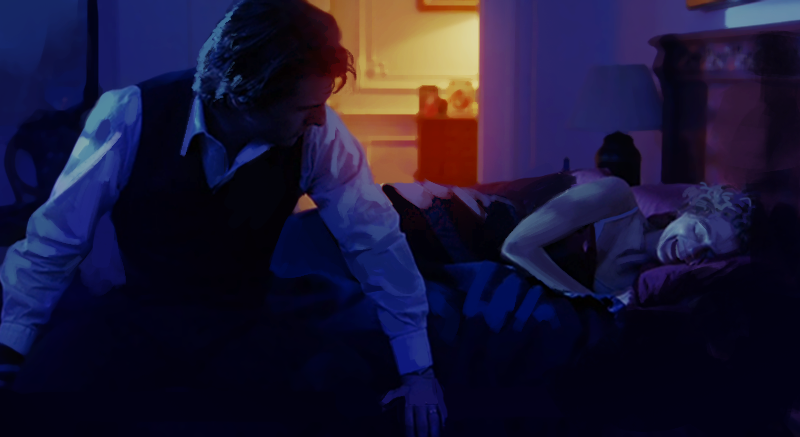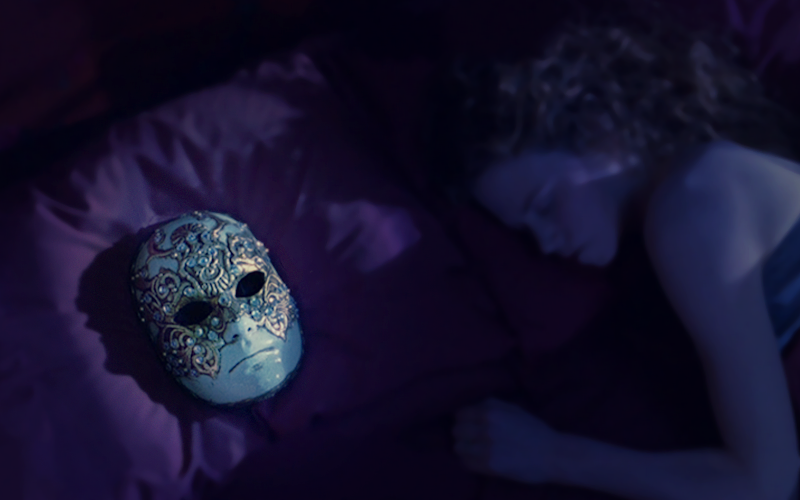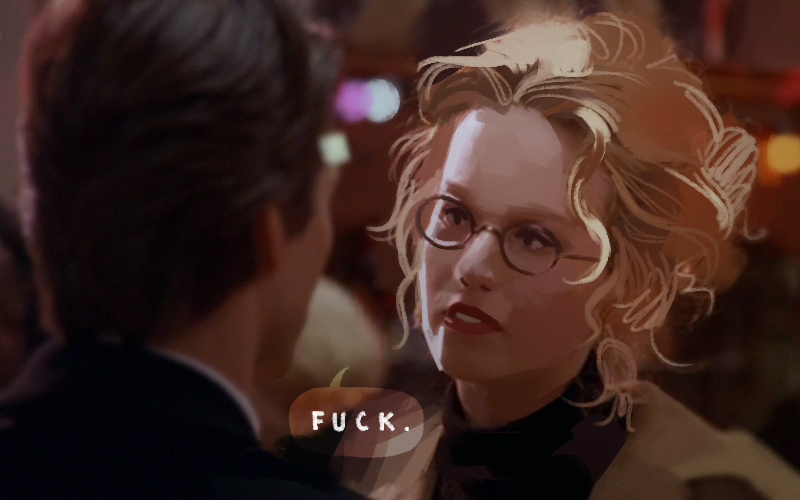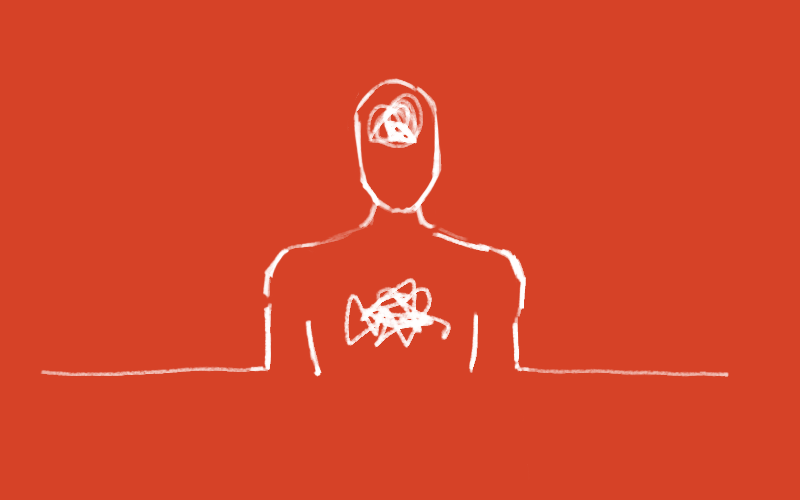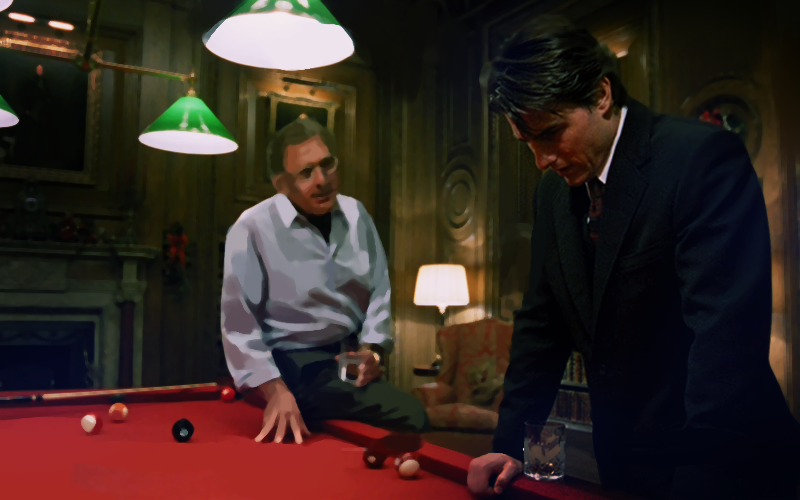Sometimes, when I tell someone of my interest in Kubrick, they will briefly brighten and then suddenly grow dour before asking, “What did you think of Eyes Wide Shut?” It is not for nothing. This film was and still is reviled by many in the public and the critical establishment. Is it Tom Cruise? Is it the couple’s lavish life? Is it the nature of Dr. Bill’s odyssey into the manors of the superrich, where women are still treated like chattel? It can’t be Nicole Kidman or her character, Alice Harford, who stonily confesses an ulterior life of desire, can it? Its threats are multiple, with the fabric of the Western privileged life taken to task. Since the wife doesn’t have to work to keep them financially afloat, these are people who can afford to cheat on each other, who can afford to let their dreams almost destroy the life they have. At root, the film demonstrates how the moneyed life of doctors, of stars, of people living on Central Park West — that the poor and middle classes look up to and seek to be — is largely a sham of shallowness. Given this, it’s easy to see why so many people dislike the film, and beyond that, why men and women have a bone to pick.
Women don’t like it because of how women are portrayed. Women do want sex, but not like how many endeavor to secure it in the film. It’s too hard to believe there are women who will go out and get drugged up to be sex slaves to elderly, unattractive men. And why is Alice being so flirty with an old oily Hungarian? Can’t she keep her husband’s attention by herself, by her own charms, and without resorting to such games? If she can’t, what is her problem? Why would she marry him? Money isn’t everything, right?
Men don’t like it because of how men are portrayed. Here’s this schlub doctor — all these women (and one man) want to sleep with him and he sleeps with no one. What kind of dude is that? Such a strikeout disappoints everyone. What’s funny is how Kubrick engenders a raw reaction to these characters, because most of the film is about the allure of sex and what is gained by “having” someone—how some hoot and holler about a conquest. The male audience is sometimes reduced to highschoolers rooting for a guy to nail a woman, while the female one is chatty and circumspect about how Alice would not keep such a delicious secret (her desire for one particular man) and start fucking with her husband’s head — better only to tell her friends in the bathroom while smoking a cigarette.
What the audience first sees of them speaks to a common critique of the rich: those who have so much, who in some ways rule the lives of others, are incredibly more imprecise and uncaring about what they do, who they want, and who they’ll hurt. Because it presents such unstable, yet successful characters, the film is intimidating. Kubrick’s disdain of easy identification challenges the audience to accept his murky characters. Why root for the schlub doctor, why clap for the stuck-up wife? When one can’t see themselves in the characters, there is no one to root for. But as critic Pierre Leprohon says:
“Spectator involvement” is really a shoddy aim and for its victim a second-rate satisfaction. The greatest literature sets up a resonance extending far beyond the immediate illusion that it creates, and the best films are those that have us accompany the characters as their friends rather than step into their shoes.
One can’t root for anyone in Kubrick, but what is explicitly biting, in this case, is the lack of a historical or genre screen, as in every work of his except Lolita. And Lolita was Lolita — it was the novel and Nabokov and pedophilia — it came packed with plenty of stuffing. Eyes Wide Shut was fin de siècle Vienna and adultery put into the age of AIDS, our age. As in Barry Lyndon, his target is the rich, but these rich can move much quicker through space — by hailing a taxi or making a cell phone call. And the woman is the hero in a different kind of way than Wendy and her “resourcefulness” in The Shining. Alice, compared to Lady Lyndon and Wendy Torrance (the other wives in his triad of late domestic films) is much more in touch with her inner life. She is a fully balanced female, despairing of being taken for granted by her husband, while freely confessing to him her daily life, her dream life. The other two don’t have the tools to make their husbands understand their feelings, with Lady Lyndon barely expressing hers out of great fear and depression.
Eyes Wide Shut is a mystical film, a babble of words that makes a very brazen echo chamber. Dozens and dozens of times characters repeat dialogue, so much so that one thinks those “Eyes” or “I’s” of the title are so solipsistic and selfish they really can’t hear anything, except their own drone. Dr. Bill is the greatest offender, though Alice parrots when she is drunk and twirling with the suave Hungarian, when high on pot, and at the end in the toy store. The delight in language is on full display in Kubrick’s most cutting film on communication. Each word of dialogue, and there are many, carries resonances, echoes, and recombinations. Starting from the first scene, the characters are drawn by their imperfections. When Alice asks her husband how she looks, Dr. Bill doesn’t glance at her, but says she looks “great.” At the ball, Alice immediately starts drinking and flirting to have fun, but also to unwind and quell the distress about life with Dr. Bill. Something isn’t so fulfilling and with little incentive to be “looking” for a job, she gazes outside her narrow hemisphere of the family for temporary enjoyments. There’s probably little sympathy for these imperfections because to identify would make us admit we are very flawed people. There is little “denying” in Kubrick — you enter a world of shit and what you shit smells like shit.
What is Alice doing with such a haircut of a man? She is vibrant, she is deep and intriguing and he is tiresome a football watcher, and a beer-drinking man who can’t even turn a flirt into the obvious fling desired. There is no cause to admire Dr. Bill. We are to observe him. Though he is a doctor and reputed to be so “knowledgeable,” he has not taken the Gospel of Thomas’s advice to “open your eyes and see what is before your face.” We are to observe him because he can’t see for himself. Being someone of means, he gets handed everything, as multiple women and a man come onto to him — he even gets into the orgy, but his indecisiveness corrupts his choices and his sloppiness gets him excommunicated. An odyssey of folly is hard to endure, as Kubrick surrounds the schlub with a world, the “real” world, that he knows little about in order for him to begin to understand what his actual place is in it.
It would be hard to watch such a man, so Kubrick convinced the biggest Hollywood star at the time to play him. Kubrick knew Cruise had limitations as an actor, just as Ryan O’Neal did, and O’Neal had a much more difficult role, taking a ride from a romantic 16 years of age to his mid-40s and gradually grow ghoulish and then despairing. Cruise only had a few days to complete his transit, though extraordinary things would happen in those three nights outside the home. Kubrick draws on and plays with Cruise’s persona to make his fall more spectacular. In no other film is he so mincingly awkward and out of touch, not stenciled into the screenplay as the bohunk or even the serious dramatic actor he reached for in Born on the Fourth of July.
The film harkens back to the great dramas of Roberto Rossellini made with Ingrid Bergman (Stromboli, Europe ’51, Voyage to Italy) which get mirrored in his countryman Michelangelo Antonioni’s tetralogy of the lovesickness (L’Avventura, La Notte, L’Eclipse, The Red Desert). Kubrick listed La Notte as one of the ten greatest films in 1963. Eyes Wide Shut takes one of the oldest saws of dysfunctional relationships — doing onto a lover what they have done to you — and submerges it in a reflective anodyne, a chemical bath that stains the players for even beginning to think in such vengeful notions. The irony is both the players engage in imagined infidelities without consummation, though the prostitute Domino’s kiss of Dr. Bill, his flirting with the models, and his feeling up of Sally are real as is Alice’s flirting with the Hungarian.
Many of the situations Dr. Bill finds himself are those of comic relief, mainly because the acting of everyone else is so over imbued, playing into the Kubrickian maze and nightmare that removes taboos and portrays almost a whole city as wanting to sleep with him. This encounter with the fantastic contains things the doctor, besides being a doctor, is not so “knowledgeable” about. The sex odyssey (mostly set in motion by his wife’s emotions) has a purpose in Dr. Bill’s life — it is a way to learn of himself. In the first few minutes of the initial bedroom conversation, Bill actually begins his journey by lying to his wife about what he did with Ziegler the night before while a few minutes later saying, “I would never lie to or hurt you.” From there to the final scene in the toy store, where he pronounces, “Forever,” his third last word of the film, is a long 35 hours later, covered in two hours of film time. But while it is Dr. Bill’s odyssey, Alice is the emotional center of the film. Mythically, she is the decisive figure in this drama, the guide like Virgil to Dante’s journey, even though she is often off-camera — a wife waiting for her husband. In his book Kubrick: Inside a Film Artist’s Maze, Thomas Allen Nelson contends:
…Bill successfully completes his psychological and moral journey, because, in ways he does not always perceive, he benefits from the company of honest women [Alice, Marion, Domino, Sally] who show him, through personal example, how to confront his unconscious fears and desires. Like other Kubrickian males (Humbert, Barry Lyndon, Joker), Bill eventually realizes a fuller humanity by responding to a latent female sensitivity in his character.
The examples from some of the women are far-fetched and ridiculous (like Marion’s professed love) and blunt (like Sally’s breaking the bad news), but with Alice as the exemplar, the lessons accrue and force him to submit. And here is where criticism of Kubrick’s women wears thin. All the wives of the main males in Barry Lyndon, The Shining, and Eyes Wide Shut are better than their husbands (all low-grade bullies) in the areas that are most integral to their manhood. Honesty, fidelity and parenting (albeit step-parenting) in Barry Lyndon. Parenting and taking care of the hotel in The Shining. Honesty, commitment, parenting, tenderness, and compassion in Eyes Wide Shut. The wives are more feeling, more truthful, more loving, and more alive: all areas that coalesce to produce the husband’s downfall. The children are mostly taught their humanity by the mothers who demonstrate and teach love. Kubrick realistically presents the ancient and current situation of male/female relations — it is a man’s world, but women are its emotional core. An astute but unheralded commentator on a film website said of the films of Ozu that the Japanese director characters demonstrate one truism — the older one gets, the more they sense the coming of nothing and they push away from it. If only Kubrick’s characters were so lucky to have a sense of their own mortality.
Another reason the final three domestic films appeal to me (and why they are still so despised) is the complete and utter failure of each main male (each a WASP) to possess life. This is attractive because it is the world I have seen every day of my life — from a father tied to television to the mockery of leaders and businessmen who have deluded themselves, lied preternaturally, and cavorted with a sick smugness. Ronald Reagan, Bill Clinton, George Bush (both), Michael Bloomberg, and Donald Trump are all twinned by and exemplified by Barry Lyndon, Jack Torrance, and Dr. Bill, no matter their degrees of success or failure. The characters aren’t aware of how much pain they are causing, their cruelty is almost unchecked, and they only fail because of their greed, their toxic minds, and their secrets, but mostly because of their fearfulness, especially of their wives. One character dies (Jack), one fades out, becoming unimportant (Barry Lyndon), and one is lucky enough to have a life preserver tossed to him by someone they love and who loves him (Dr. Bill).
While many point to his war, technology, and future films as his apex: Paths of Glory, Dr. Strangelove, 2001, A Clockwork Orange, and Full Metal Jacket, the war between men and women seen in Lolita, Barry Lyndon, The Shining, and Eyes Wide Shut was just as important and, in later years of his life more so, especially as he was surrounded by his wife and three daughters (one not biological). It would be simplistic to say that they informed this later work more than anything else—simplistic, but true. He shot and edited all the late films, with the exception of parts of Barry Lyndon, within a ten-minute drive from his house. It also accounts for a greater preoccupation with children and how they affect their parents’ lives and vice versa.
Though I am at odds to say it, Eyes Wide Shut was meant to be his final film. It took 12 years to finally make another. Everything about it from the subject matter to the setting in the village he grew up in, to the old world party with dancing and jazz standards on the soundtrack, to his only onscreen cameo (he is sitting at the Café Sonata) speaks to this. His brother-in-law, Jan Harlan, who worked closely on all the films from A Clockwork Orange on, said, “He considered Eyes Wide Shut his greatest contribution to the art of filmmaking.”
It’s the only film without an on-screen murder. The technology and huge government syndicates that made up the earlier films are now off-screen. His machine interest became more muted, because, though few might admit it, he was as interested in human psychology as much as Bergman, a director he wrote a letter to in 1960 saying, “Your vision of life has moved me deeply, much more deeply than I have ever been moved by any films.” Eyes Wide Shut is about humanness, probably more than any other Kubrick film. After a long life, a long career, nearly 50 years of making films, this is what Kubrick came back to, and maybe, in a way, where he had always been even. Even in the technology-saturated 2001, humanity is the main question, along with how it has been transferred to a computer, and how we should remain human in the face of advancing machines that will try to kill us, after we program the frailty of lying into them. Many of Kubrick’s protagonists rupture during the journey into their mortality (and it is no mistake that each of the male characters in the last three films has a significant encounter with a dead, dying, or geist-like woman) and what happens to their face is a most significant tell, as it gets estranged from their normal existence. Not only the crazy stare but the moaning, stretched face — a rupture occurring during the first bedroom scene when Dr. Bill minutely glares at his wife from under the white of his eyes during her confession.
Being a master phrenologist, as most of the great directors were, including Dreyer, Bresson, and Ozu, Kubrick was really much more interested in the human body, specifically the face and the eyes and how we communicate emotion with them, demonstrated in many of his most remembered scenes: Slim Pickens on the bomb in Dr. Strangelove, Keir Dullea in his spacesuit watching things beyond him happen at the end of 2001, the horrible gang rape to “Singing in the Rain” in A Clockwork Orange, the duel and Barry’s looks of regret at his stepson and his ultimate decision not to fire at him in Barry Lyndon, and Jack’s face coming into the broken door panel in The Shining. Film directing is borne out of our fascination with our species. The process of babies staring at faces of other people nakedly and without shame builds into the childhood games of make-believe we foster and cherish, games that ultimately grasp for and push us into adulthood, where life is serious, where the car we drive can kill, and where those we fall for might not like us or like us too much — in either case, we melt.
Kubrick takes the fantastic discovered in 2001 and transfers it into the domestic settings here and in The Shining. The prevalence of dreams and the urges behind them helps blend fantasy and reality. In each, the banality of domesticity meets the fantastic with the negative image of its ideal import being projected — pagan sex and death in the former and filicide and uxoricide in the later. Both films examine the modern American family, though the class is different. The poorer one has broken apart. The richer gains a reprieve. Neither really knows how they end up where they are. There are forces in the world that don’t discriminate. We don’t know when we (or our relationship) will die, but we know there’s always a chance that each day could be the day. In Nelson’s chapter on Eyes Wide Shut, he says,
EWS resembles the more deceptive narrative strategy found in 2001 and The Shining, in which predominantly solemn and naturalistic surface orders are at war with an internal satiric disarray caused by unacknowledged irrational forces that exist within the structures of both personality and civilization.
Both The Shining and Eyes Wide Shut ask the question of whether the main characters are there, participating in reality on a metaphysical level. Even though Dr. Bill’s character is in the entire film, it is as though he is not there, both in his presence and the actor’s presentation. In every scene he shares, the other actor or actors overshadow him: including Alice, Ziegler, Marion, Domino, Nick Nightengale, Millich, all the players at the orgy, the hotel concierge, and Sally. They speak the most, have the most verve, they have all the punchlines, except Dr. Bill’s priceless, “What would you recommend?” tossed at Domino after she asks him what he wants to do with her. Kubrick, with the script adapted from Arthur Schnitzer’s novella Traumnovelle (Dream Novel), which he followed to a degree, constructed the film so these characters run circles around the straight man with star quality. Dr. Bill is the focal point but, as his personality suffers from his shortcomings, he becomes background amongst others who live with cartoonish haphazardness — they are all in it to tempt him out of his shell, with Ziegler’s probable lies at the end the chaser to the mask’s appearance on his pillow, which makes him tell all. Dr. Bill can’t assume the stage until he has shed some of his naiveté about his wife. What compels him to try and understand the machinations in the world is the fact that in even one moment of their history he (and his daughter) were devalued — meaningless. What follows is Kubrick’s first bloodless suffering. The spark as ever is revenge.
The three lynchpins of the film are the couple’s scenes alone: the initial bedroom fight for nearly 15 minutes, coming together in the bedroom right after Alice’s dream (eight minutes), and the bedroom/toy store part at the end (ten minutes). In each, very different interactions produce equally varying kinds of touch and separation between the couple. The rest of the action in Eyes Wide Shut, excepting the opening party at Ziegler’s, which casts its own unique spell on everything that comes after, is more aimed at the popcorn audience. Kubrick seems to be saying, Ok, you want more? Here’s more plot, here’s more action, here’s more sex, and with each progressive scene, from Dr. Bill’s visit to the dead patient to the orgy, and finally to the morgue and Ziegler’s, the action becomes more tense, more complex, and more intriguing. Yet, the film is rooted in the communication or non-communication between the couple. In the end, these conjunctions, as opposed to the “adventures, whether they were real or only a dream,” give the relationship the authority for everything else in the film to reflect.
The first scene is a sequence destined to become more storied in Kubrick, as is the seemingly humdrum kitchen scene between Halloran and Danny in The Shining. It begins with them smoking pot in their bed. Dr. Bill is placed in strange relation to his wife. While she is sprawled out on the bed with her back to him, he sits beside her legs with one arm on another side of her, pinning her in an odd intimacy. He is probably waiting to tend to his sexual needs or maybe for the joint, but there’s a hint of disconnectedness already. On asking the question of his encounter with the models at the Christmas party the night before, “And where did you disappear with them . . . for so long?” Alice sits up on the bed and the camera moves right to left with her, mirroring the energy shift of this accusation, which cuts into a closer medium shot of them. Then Dr. Bill tries to seduce his wife by kissing her neck, ear, and shoulder and feeling her up, as he playfully interrogates her about her suitor at the party and what they did, finally concluding, “Is that all . . . Just wanted to fuck my wife?” These are some of the same physical motions he did the night before when they started to kiss and touch in front of the mirror, with one move also doubled later when he slimily feels up Sally and flirts with inanities like, “Hello, Sally,” and parroting her words,“I umm,” with “You umm.” Finally, what brings Alice off the bed and out of the grasp of her husband until some six hours later, is when he answers his own leading question about another man wanting her (after Alice has answered it with a giggle and a “That’s right”) by saying it’s “understandable . . . because you are a very, very beautiful woman.” Again her movement is accompanied by a cut and a Steadicam moves with her and places her goldenly-lit body in underwear and a see-through camisole against the Kordova purple of the bathroom — a light/dark, warm/cold contrast complimenting Kubrick’s vision of disconnection. This doubling and the similar rhythms between shots give the film a very active heartbeat — they are meant to compel the eye and their systolic precision burrows into our nerve endings, compelling us to watch the drama, but also to be delighted by the coloring and shading of the set and the overall mise-en-scene of two people in a bedroom interrogation.
The bedroom’s space is small, but Kubrick breaks it open, multiplying the possible diameter afforded, while still maintaining claustrophobia. The architectonics of the mise-en-scene matches the arguments and war of words between the characters. Because the couple has now separated sufficiently due to their ill communication, they can’t share the same frame and will have separate shots for the rest of the long scene. Soon the camera glides with Alice again, when she says, “Do you realize, that what you’re saying is that the only reason you wouldn’t fuck those two models is out of consideration for me?” As it deepens, the shot/counter shot of the conversation creates Kubrick’s maze, caused and prolonged by the power of words.
Alice stalks in front of Dr. Bill like she is now on stage and he is the spectator, as the audience is, and appropriately we see her from a low-angle position almost the entire time until a close-up when she tells her story. Initially, Dr. Bill is viewed from the far side of the room on the bed in a medium shot, the side Alice isn’t on. Yet sitting on her vanity’s seat, after she hammily asks him if his female patients might wonder, “What handsome Dr. Bill’s dicky might be like?” the shot placement changes very minutely, now a few feet to the right — a little closer to him, with a more complete view of his face. This is shot with a wide-angle lens and is very close to Alice’s real POV of him during the talk and closer to his anger as he says, “Sex is the last thing on this fucking hypothetical woman patient’s mind.” After Alice asks, “And what makes you so sure?” the next shot of Dr. Bill returns him to his previous unwidened medium shot. Then after she stands up, ranting about the place of women, what they really want, and what they “are like,” we return to Dr. Bill now in a medium close-up from his bare chest up. After the laughing fit, Alice starts to tell the Cape Cod confession and the view of Dr. Bill bounces back to the initial distance, then back to a medium close-up when he answers if he remembered the naval officer. When she says she could hardly move after the officer looking at her, we see the first of four face-only close-ups of Dr. Bill, staying with that viewpoint until the placement returns to the initial medium close-up when the phone rings and breaks the spell of the story, further punctuated by again cutting on movement into a moving shot as Dr. Bill picks it up. During the confession, as Alice says, “And I thought if he wanted me . . . even if it was only for one night, I was ready to give up everything . . .” Kubrick cuts from Alice on that last word so that when we hear the second half of that word, we see Dr. Bill. Then she goes on speaking, with the camera on him, “. . . you, Helena, my whole fucking future . . . everything.” At the mention of their daughter Helena, his eyes tilt up slightly and slowly, the closest Dr. Bill comes to the infamous crazy stare.
The next bedroom scene where they are together, about six hours or nearly 55 minutes of film time later, takes place mainly from the point-of-view of the bathroom (where Alice stood against the purple interior of it in the first scene) — an entirely new way of seeing the room from the first scene and a destabilization that will be furthered in the final scene when Dr. Bill finds the mask on his pillow by Kubrick shooting the bed from the exact opposite POV near the door, so he covers it from all three sides in the course of these events. The middle bedroom scene is shot fully in that Kordova purple light of the night, with the hallway lit by its golden lamps—the exact opposite of the first scene, where the visible room, the bathroom, was in purple and the bedroom golden. Dr. Bill comes home from his adventures and finds Alice laughing in her sleep. She wakes up from a nightmare of her having sex with the naval officer (or so she says)—a similar type of prognostic nightmare Jack had about killing his family, though that one nearly becomes a reality. Alice recounts the dream, but stops and only tells the rest after he reassures her with, “It’s only a dream.” She hugs him tight, before revealing the ending of her having sex with many different men in an outdoor area — a garden that recalls Eden.
The touch in this scene is of a very different nature. In one sense, it seems what enmity existed between the couple after the confession has dissipated, at least on her end following the curt phone call to him in Domino’s apartment. So much has happened to him in the last hours and so much film time has passed that all the problems he left behind with her seem buried, but not deliberately, though they come back to the surface soon enough. He was kissed by a woman who looked very much like her (Marion), kissed another woman (Domino), and came close to sleeping with her and a few different others at the orgy, as well as witnessing a failed ménage à trois with a teenage girl and two older Japanese men. Yet, as soon as Bill hears the contents of his wife’s dream, all their complications return and he takes the stance of a typical jealous husband wanting to know everything — to beat himself up and make her suffer by confessing wrongdoing. Dr. Bill, in some way, is inexplicably cuckolded by her. Because he failed to have sex with someone, it’s easier to treat her dream of “fucking other men” as a reality and to blame her, as the next night, her words will echo in his mind as she smiles at him from the kitchen table. She acted out her desires in her fantasy. In his (both a fantasy and a reality), he was soon earmarked as an intruder. He wasn’t real enough at the orgy, they didn’t buy him.
After recounting the dream, Alices tenderly takes hold of him. She wants comfort and reunion, but their connection has been dissolved by both her confession and what he has experienced just before. He is paralyzed, with a parted mouth and blinking eyes in disbelief because he has just lived a version of her nightmare. Alice has one-upped him again as she “fucks” many men in her dream, just like some of the carnivorous women at the orgy do. By means of the film’s POV being his and given with how many times Dr. Bill plays the fantasy of his wife with the naval officer in his mind — it seems to him she has actually had sex with someone else. Alice has, by reciting this dream and finalizing the fantasy of having the naval officer, in a way, actualized the lust she owns but never acts upon. Unlike her husband, Alice confesses (for a second time) her imagined indiscretions aloud. She has been much more out in the open and outspoken about her desires — an integrity Dr. Bill lacks. Though he has been in physical proximity to other women, Alice’s describing her mind’s play has been much more evocative, and arguably more real, because her soul is involved, the soul he knows best. Marion lacks perspective, Domino lacks commitment, Millich’s daughter lacks experience, and the women at the orgy lack the capacity to love due to their being drugged and/or paid off to be there and perform. Dr. Bill holds the revenge of sex with another woman over Alice, he wants it and nearly finds it the next day with Sally, but she has self-control and sends Bill on his way with knowledge of Domino’s HIV. He is fearful of his mortality though no one slept with anybody. Dr. Bill should know you can’t get HIV from kissing. But he doesn’t know what he wants and most of his notions have just shown up like the chance characters he encounters. Dr. Bill doesn’t even know he has to go in search of his soul.
In the final bedroom scene, Dr. Bill again comes in while his wife is sleeping, but in this scene, his missing mask is on his pillow — a fact established at the beginning even before he enters the house. The first seemingly “willed” shot of the film and its director nods to the more Hitchcockian notion of letting the audience in on something before the character. Would his discovery of the mask be just as strong or stronger if that viewpoint wasn’t given? The mask’s appearance is never explained — just how does it get there if Bill locks it away the night before? Did he leave it at the orgy, after he took it off? And did they, in turn, give it to Alice somehow? There is a slight case to be made that even though Alice couldn’t have been at the orgy she metaphorically was, as being Dr. Bill’s guide, she is also his guardian angel. The mask is its own symbol — both of Dr. Bill’s shadow self that does not tell his wife what he’s doing and the everyday mask people put on. Like Othello, Dr. Bill at the end, when facing his other frozen face, has the “ocular proof” of his double, mischievous life, and its symbolic power is enough to dismantle his idea of himself as the scorned lover and package him into the role of an ashamed teenager who must confess the trouble he’s gotten in to his mother figure. For all his surface accomplishments in the world, Dr. Bill’s psyche is still that of an adolescent and in the last scene, he crawls into her bosom for comfort and confession. His descent to this level as Jack and Barry Lyndon before him had to go down, was signaled by how he prostrated himself on the bed in the middle scene, folding his hand between his crotch while Alice started telling her of her dream. This time, right after seeing the mask, he starts crying, and puts his hand on his chest, over his heart. It’s a grace note as worthy as John Wayne touching the top of his arm in the doorway at the end of The Searchers. Like a defeated dog, he slowly falls into the chest of Alice, something he hasn’t sought since she rebuffed his attempts to have sex in the first bedroom scene. This is also shot from a unique view.
Again this scene is in Kordova purple as they come together at his reaction to the mask, yet, to go along with the many displacements, Alice makes no sign that the mask is there — another bit of magic adding to the fairy-tale aspects of the film. Is the mask really there or can only Dr. Bill see it? Has the mortality of a woman (Mandy/Woman at the Orgy/Dead Woman) made him understand that it’s useless to hold an imagined, but not acted upon, infidelity by his wife against her — not when people can die or in Ziegler’s words:
Listen, Bill. Nobody killed anybody. Someone died, it happens all the time. Life goes on. It always does, until it doesn’t. (laughs) But you know that, don’t cha?
Dr. Bill’s masquerade has become useless. He still has a daughter, he still has a wife and he makes his most life-affirming, honest, and moving the decision of the film—to tell all. And with those last words of Ziegler, the maze gathers involutions, as according to Michel Chion’s study of the film, Dr. Bill’s own words to Mandy ninety minutes before on the dangers of drugs, “You know that, don’t you?” comes back to him to smooth over any misunderstandings. All of Kubrick’s protagonists are taught not to fuck with life. There are no empty lessons in his world. Even our own goodwill gets thrown back at us.
The mask scene carries over to the toy store where the couple has one last talk punctuated by Alice’s final word “Fuck” — her wish for them to do it in the future. Like so much of Kubrick, it is an unsentimental sentiment; but like the matador artist he is, indulging in emotionally overabundant narratives, the delivery of the final cutting word can be read as a touché moment, throwing whatever prejudices and hang-ups his audience has about sex right back into their faces, but also as a strict reminder of the feral and physical needs in our bloodstream. A slippery ending. Isn’t the need for sex to solve communication issues shallow? Isn’t this just another Kubrickian joke? Reactions certainly would have been different if she said, “Make love,” but such saccharine didn’t live in Kubrick. “Make love” was from the Kennedy Administration. His last three films are full of f-words, mirroring the cruelty and savaging of the language in our culture. Instead of expressing the emotion, the curse word stands in for the emotion behind it, nailing it and giving the anger that prescribes the feeling and dwells inside the word precedence. If our language mirrors our soul, then Kubrick tracks the devaluation of relationship, as Dr. Bill says from the start, to begin their problems, “Is that all . . . Just wanted to fuck my wife?” to turn himself on with the knowledge that he has what an other desires. Perhaps Dr. Bill’s adventure won’t change their relationship much — even Alice has begun to talk like him.
In Eyes Wide Shut, the framing of the face alone gets emphasized in the final scenes, from Dr. Bill’s breakdown to the close-ups of both post-story with wet, reddened eyes, and finally the talk in the toy store where the background becomes blurred out, though they stand by the stuffed bears, and finally the tigers. In the toy store scene, all the expressionistic techniques of Kubrick fade away and their final conversation is filmed in a simple two-shot—the most conventional scene of the film. There’s little left to investigate except how the couple will deal with their future after their “. . . adventures, whether they were real or only a dream.” The words are important, though the “very important thing” they have to do is an action (“Fuck”) not a promise, described by the worst one-syllable word in the English language. In this instance, they don’t touch at all — for decorum sake and because they haven’t touched since he told her everything and are drifting back to raising their daughter and trying to go on with the normal business (Christmas shopping) of life. The ending leaves the couple suspended. Dr. Bill does not get a reaction shot to the curse word that hangs over their “future.” Alice does not even smile after she pronounces “Fuck”—it is no joke to her. It is the epitome of all the words in the final scene and their mildly-voiced challenges. Words of supposition, words that could transgress or configure a much different sympathy than either character wants like, “Maybe I think we should be grateful” and “No dream is ever just a dream.” After the important thing, they have to do—“fuck”—Kubrick drops the future into the viewer’s lap. It is an ultimate instance of Rilke’s, “You must change your life,” being inflicted upon the film audience.
In the toy store scene, Dr. Bill cowers before his not only taller and more knowledgeable wife but before the strong emotionality, she continues to hold and demonstrate. Piggybacking on his child-like movements the night before, there’s a touch of the scared little boy who after the bad day wants reassurance and that’s why he suggests they will now be awake “forever,” repeating the latter word twice. Alice is far along on the journey to wanting to understand herself, but this makes one again ask, especially at the end of the film, what the hell is she doing with him? What can she see in him? Is it the “security” she alludes to earlier? It’s easy to criticize such an idea when one has it when one can afford to be “looking for a job” for an interminable amount of time. The reason Kubrick needed a rich person, a doctor (Kubrick’s father was one and he told Michael Herr, “everyone hates doctors” [he certainly did, as he wife regretted that he had gone to one, he might have lived longer]) to have a downfall, may have been the verisimilitude that only the well-to-do can only afford to have the possibility of the conversion experience Dr. Bill goes through. What does she see in him, though his eyes are wide shut? He’s a good father, as Barry Lyndon is also dubbed by that film’s narrator, a competent doctor with superrich clients, but more seems to be lacking. He is shallow, he is not exciting, he is mincing, he is not acculturated—why else is she giving him a Van Gogh book for Christmas? He is mannerly — giving Domino money anyway and then bringing her a pie the next day, keeping Ziegler’s secrets, helping out the model in Rockefeller Center — but manners only go so far. He takes his wife for granted. Alice loves someone who is out of her depth emotionally. Her final declaration, though really a warning, “ . . . but, I do love you,” is tossed to Dr. Bill not as a nice fact, but a reassurance that is to be gotten out of the way like going to the bathroom before bed. Their unsustainable connection is only made temporarily sustainable by the desire for sex. Her initial dissatisfaction is mainly glimpsed in the mirror image of her looking distant as her husband comes into her space and feels her up while robustly kissing her on the mouth right after the Christmas party. She yearns for more but finally comes back to desiring what he is able to deliver, the intimacy of his penis inside. At the end their love act risks being mechanical because it is called by its crude name, but is also an echo of the examples of cheap love throughout the film — the baseless declaration of love by Marion, the encounters with the prostitutes, the orgy, and the ménage a trois at Millich’s. Dr. Bill and Alice can’t escape a world that is feverish in an unhealthy way, or as Antonioni put it 40 years before, detailing L’Avventura:
Why do you think eroticism is so prevalent today in our literature, our theatrical shows, and elsewhere? It is a symptom of the emotional sickness of our time. But this preoccupation with eroticism would not become obsessive if Eros were healthy, that is, if it were kept within human proportions. But Eros is sick; man is uneasy, something is bothering him. And whenever something bothers him, man reacts, but he reacts badly, only on erotic impulse, and he is unhappy.
Because Eyes Wide Shut is about humanness, it carries its share of human sickness as well. It’s ending postulates that what holds people together for a time is sex — the alchemical, the desire, the salts exchanged when the bodies put themselves together.
There have been a few extraordinary dissections of critical hypocrisy in regards to Kubrick’s swan song. One by Lee Siegel who says,
Not a single critic . . . made any attempt to understand the film on its own artistic terms. Instead, the critics denounced the film for not living up to the claims its publicists had made for it, reduced it to a question of its director’s personality, measured it by how much information it conveyed about the familiar world around us.
One could add that because many people expected a sex-romp when they didn’t get it, they felt as icily resentful as one who expects sex with a person but comes away with none. The form overwhelms them — they can’t see the story because throughout the film they try to fight the form. Rigor stands in their way. If the form, including the precise placement of the camera, the tracking shots, the lighting, and the décor of Kubrick’s film is too controlled, this is like criticizing a book as overwritten. Yet, if a filmmaker’s form fits his or her philosophy — what is the argument against? John Cassavetes let his camera get in the way all the time, focusing and refocusing, buzzing closer and closer to the characters, even thrusting at times, because the characters dominated the mise-en-scene — because, in the words of critic Kent Jones, he “ma[d]e people themselves into his mise-en-scene. Every gesture, every look, every movement, every hesitation has become the exclusive property of the director.
Human activity is to Cassavetes what color is to Vincent Minnelli and space is to Hitchcock.” What is in the interests of Cassavetes’ philosophy pertains to Kubrick as well—the same way Ozu’s non-movement, floor level shots, and 50 mm lens fit his. In the films since 2001, Kubrick had space, light, and acting on his mind as he tried to find a way to express the fantastic and in a manner, Keat’s negative capability, “when a man is capable of being in uncertainties, mysteries, doubts, without any irritable reaching after fact and reason.”
Finally, people were frightened of Eyes Wide Shut and what it represented because it showed a failing relationship, one where love is uneven, where people, though having good intentions, are understandably lost. In line with Kubrick’s unsentimental view of the world, but outside the purview of the story’s timeline, Dr. Bill and Alice will probably not last another nine years because they aren’t friends and they don’t share an engagement with the feelings that make love love. Their marriage takes after a business transaction of finite time and will, with a divorce settlement, leave both financially well off, as their daughter will split time between their two mini-estates, probably on either side of Central Park. So the ending is practical, darkly humorous, but basically untenable — as so many of Kubrick’s ends are including: The Killing, Dr. Strangelove, A Clockwork Orange, Barry Lyndon, The Shining, and Full Metal Jacket. Unlike so many of his characters, they aren’t completely destroyed, but Alice will only say, “we are awake now,” not “forever,” as Dr. Bill tries to change the time span, because that word “frightens” her, as the “forever,” that which may live or die echoes in the images and sounds of the grave endings in Dr. Strangelove, 2001, Barry Lyndon, The Shining — the most important echo in life and art. It is no coincidence that these five films are Kubrick’s greatest.
A few years ago, on a day just before Christmas, I saw Eyes Wide Shut in the theater for the third time, the first time since its release. Something to be pointed out from the experience is the film’s grain. The grain of the film depends on the film stock and the exposure of it. In Eyes Wide Shut the stock has been overexposed to make the image very grainy, almost dirty, where you can see the particles of film. As a commenter on the website, the Kubrick Corner, says, “Kubrick chose to push the negative for most of the film, underexposing by two stops and overdeveloping the negative to compensate, thereby creating a grainier print which was the look he wanted.” This is something that can’t be duplicated on DVD and though it can on Blue-ray, for some reason it wasn’t. The grain adds to the fairy-tailish feeling that large parts of the film contain. It gives the image of the film a quasi Seurat-like sheen. The grains stand out as billions of dots and the image is emulsified, distinct, with a tang all its own. The film isn’t clean — it carries the weight of old color photographs — giving it a less than realistic temperament that those seeing it in any other format would miss. The dream-stateness of Eyes Wide Shut only comes out theatrically, in the format, Kubrick had the most control over.
When Kubrick died on March 7, 1999, there was still a little over four months until Eyes Wide Shut’s release date, July 16. There is no basis to argue Kubrick wouldn’t have altered the film right up to that date and possibly even beyond as he did with 2001 and The Shining, films most similar to Eyes Wide Shut. Michael Herr says, “. . . there was looping to be done and the music wasn’t finished, lots of small technical fixes on color and sound, but it wasn’t ready to show . . .”
With the exception of the three-hour Barry Lyndon, the two-and-a-half-hour Lolita, and the two-hour Full Metal Jacket (Spartacus is not a true Kubrick film and all the other films pre-dating 1960 were under 95 minutes), the others: 2001, A Clockwork Orange, and The Shining were all from 137 minutes to 146 minutes. Eyes Wide Shut is 158 minutes, but if Kubrick had lived it wouldn’t have surprised me if he’d lopped off another 15 to 20, to bring it around 140 minutes and possibly to get another showing per day in the movie theatre, as he always had an eye toward the selling of his product, going so far as to check the size of ads in foreign newspapers.
The way it stands, Eyes Wide Shut is a rough cut and as to what he would have further edited, I think most of it would have been in the second half of the film, which after the long first half is really the last third of the film. Particularly in the longueurs of the scene with the hotel concierge, the second visit to Summerton in the daylight, the scene with Sally, and the problematic final scene with Ziegler of which Michael Herr says:
…no man could have wished it longer, and though it’s an incredibly interesting scene in some ways, I don’t even know what it’s supposed to be about, unless, as I suspect, it’s really about the red pool table. You could always count on Stanley every time to vote for Beauty over Content, since he didn’t think of them as two separate things.
Timing-wise, there is something off with these scenes. The first half includes long scenes: the party, the bedroom conversation, the conversation over the father’s dead body, scenes with Domino, Nightengale, and Millich, the orgy, and the second bedroom conversation, but they are carefully constructed so to establish a dream state. The second half is an attempt at explaining the first half, but these scenes get stretched out. In Barry Lyndon, the parade of events at the end, excluding the tense duel (the twin of Eyes Wide Shut’s pool table scene, without guns), happen with a rapidity ennobling the narrative’s reach. In the hotel concierge scene especially, the flaming being is afforded a lot of space, even though his over-the-top schtick is all too obvious from his first shot, though he wasn’t in the first half as Millich, or Domino’s other half, Sally, were. The reaction shot of him coming down after his flirt, outside of the perspective of Dr. Bill, who’s consciousness hangs over every scene, is out of keeping with the architecture of the film.
The final scene with Ziegler, a duel of words (the weapons of choice for a film about communication), goes on for 14 minutes. As each piece of Ziegler’s information blows his mind, Cruise rubs his face raw, but it is a hard role to sell, as Sydney Pollack gets the good lines and how he lies (since some of what he says may be construed as such) is the more interesting part of the dialogue. The characters dance (and their blocking by Kubrick) around the pool table recalls the circular motions of the generals in the grand drawing rooms at the chateau in Paths of Glory. When we first see Zeigler, he is playing pool. This table, a symbol of the old world, stands as the wall between the two for most of the scene. The glories here are the décor and the lighting, as well as the shot placement and editing. The primary red baize of the table and the six green circular fanlights above proudly stand out, emphasizing the Christmas setting and the extravagant lifestyle of Zeigler. When he tells Dr. Bill he wants to talk about what’s going on, Zeigler is shot from the side of the table so we only see half of his face. Like in Paths of Glory, the grandiose interior serves to make the lies believable. Power, built from money, is persuasive. Throughout there are many pauses and sighs by both characters during this power play between the old guard and the not so streetsmart WASP. Seemingly Kubrick thought he needed more time for the “explanation” a la the “explanation” at the end of Psycho, though that one is relatively short and from Kubrick’s cut presented, there was more emphasis on letting it “sink in.”
While it is hard for Dr. Bill to grasp that the woman in the morgue was the woman at the orgy (and then was also the initial woman who overdosed at Ziegler’s), I don’t think the audience is that daft. The question really becomes (since two different actresses played each role, but look very similar), is this apparently accepted part of the explanation really true? Why else did Dr. Bill stare down the face at the morgue? Because he has certain doubts about her identity. There also, for identification sake, Kubrick adds the voiceover of the woman at the orgy saying, “Because it could cost me my life and probably yours,” to signal it is that woman. But if Kubrick, the director, clarified this with the voiceover, Kubrick, the editor, might have one day before the premiere thought better to let the audiences’ eyes solve the mystery. After all, what impels him to go to the hospital in the first place? The name Amanda in the newspaper article, from “Mandy,” the name he repeated when he brought her out of unconsciousness at Ziegler’s. As Nelson suggests, the use of two different actresses may have been due to the long shooting schedule, but Kubrick knew what he was doing — and he had been infamous for throwing in little off-kilter items earlier, as The Shining’s details around Danny’s injury and how long Jack has been on the wagon, as these subjects are given different answers by Jack and Wendy.
The other voiceover of something previously said, this time of Alice describing her dream, “ . . . Everyone was fucking . . . and I was fucking other men,” is used when Dr. Bill looks at her in the kitchen after he gets a beer. To have had a silent exchange of glances would have been more powerful as the audience could easily see things are not right with them, hence the game of goody-good parenting in front of their daughter. Alice’s close-up alone, with its possibly complicitous smile and a pinky to the chin, could have inched them deeper into the maze, rather than spelling it out. •
Images illustrated by Barbara Chernyavsky.
